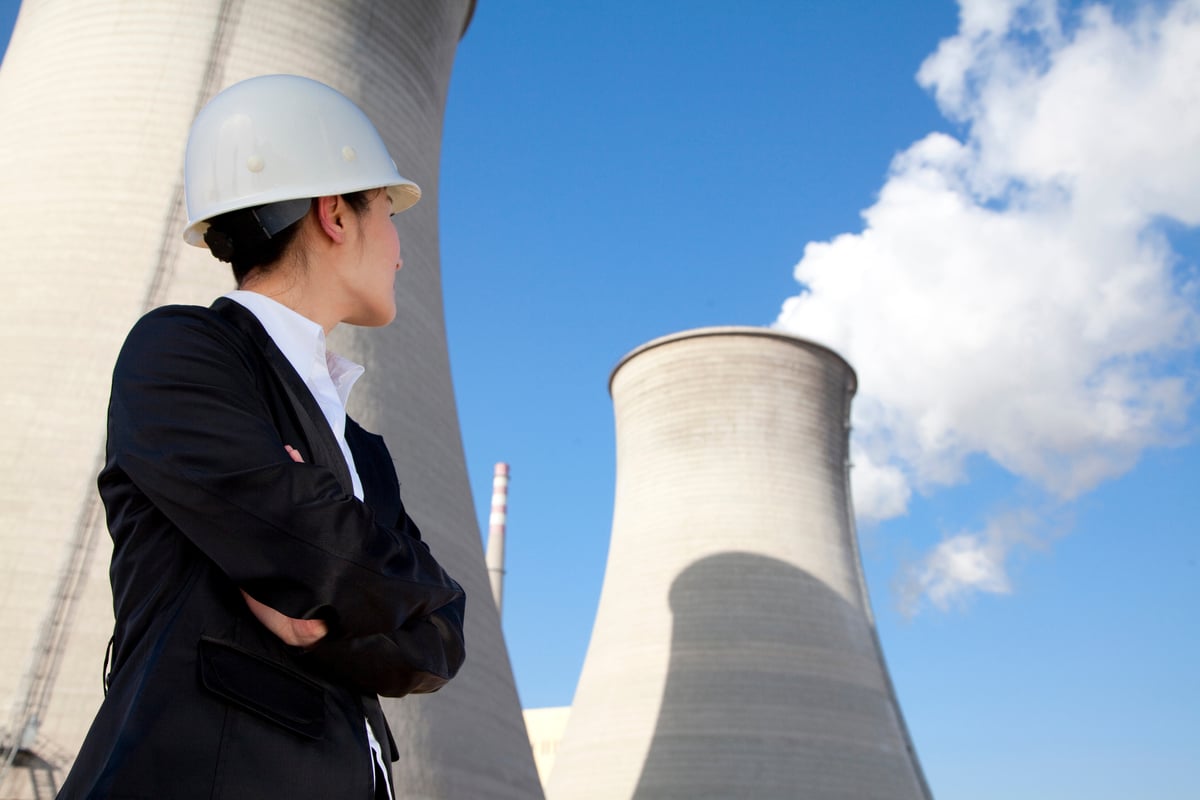As Foolish investors, we know we must be wary of companies that seem to be too full of proverbial hot air. But sometimes hot air -- and other industrial gases -- can be a great investing opportunity. My favorite company in the space is Praxair (PX 1.03%).
Praxair supplies industrial gases and surface technology solutions to a variety of end users globally. The three segments the company operates are:
1. Atmospheric gases: This includes oxygen, nitrogen, and argon produced through several air separation processes.
2. Process gases: This includes carbon dioxide, hydrogen, carbon monoxide, helium, specialty gases, and acetylene, which are all produced by processes other than air separation.
3. Surface technologies: This includes coating services and thermal spray consumables.
Comparable to a utility company, many manufacturing companies require one or more of the above types of gases or technologies in their production processes. Therefore, Praxair's customers operate in a range of industries including manufacturing, metal refineries, energy, chemical production, electronics, healthcare, food and beverage, aerospace, and others.
There are three other key global players in this industry: L'Air Liquide SA (NASDAQOTH: AIQUY), Linde (DB:LIN), and Air Products and Chemicals (NYSE: APD). Competition is based on price, product quality, reliability, technology, and service to customers. However, similar to a utility company, the deciding factor is often geographic location of the competitor relative to the potential client. All of the above companies produce the same quality of product, and offer similar prices that vary primarily by distance to the supplier. Therefore each player captures a substantial part of the market in the geographic area in which it is most densely active.
Before you Fools set off to travel the world in 80 days in a hot air balloon, there are three key facets to this business that one should understand. First, gases may dissipate, but customers will not, given the stickiness of this market. Second, foreign currency translation is deflating financial outcomes. Third, the company has an opportunity to put the pedal to the metal in emerging markets.
Stickiness in customer base
A business can be described as "sticky" when current customers tend to remain customers in the long term. The industrial gas industry is gorilla glue-level sticky for a couple of reasons.
The main cause for stickiness is in the distribution methods. Praxair operates three separate distribution methods: 1) on site, 2) merchant bulk liquid, and 3) packaged gases. The first of the three methods is the stickiest. On-site (also called "tonnage") is used for customers requiring massive volumes of industrial gases at a constant demand level. Praxair constructs a plant on the customer's site that connects via pipelines and supplies the customer's needs. The typical contract averages between 10 and 20 years with minimum purchase agreements and price increase clauses. The second of the three methods, merchant bulk liquid, is for customers requiring large amounts at a less constant rate. Praxair delivers gasses by truck from plants within a 250 mile radius to leased storage containers on the customer's site. The typical contract averages between 3 and 5 years. The last method, packages gases, is for customers requiring small volumes. Praxair delivers cylinders of gases according to a contract that averages between 1 and 3 years, or by purchase order.
Because of the longevity of the contracts, as well as the capital intensity required to build an on-site plant, once customers have selected their industrial gas supplier they rarely change. Not only does the industrial gas usually represent only about 1% of costs for most users, the replacement process is a hassle. The customer would have to find another spot to put the replacement tank, pay for the new piping to be installed, and then pay for the removal of an old tank.
Luckily for Praxair, these factors mean that once a contract is signed, it is very reliable income.
Appearance of decreasing revenues
As discussed in the company's Q1 2015 earnings call, foreign currency translation is causing a decrease in the financials. Sales growth measured in USD declined by 9% from first quarter of 2014 to first quarter of 2015 despite there being very little change in overall sales growth when measured by volume. If one were to exclude foreign exchange effects, sales increased by 1%, and share buyback initiatives decreased share count by 2%, causing earnings-per-share growth of 4%.
Of course, we can't ignore the effects of currency issues. However, as Foolish investors, we look at the company's long term potential. While I can't predict foreign currency fluctuations, Praxair holds long term potential because of the high demand for the products. In fact, the demand is so high, the company had more work than it was able to accomplish in the reporting period, requiring them to report something called a backlog. When thinking about backlogs, it can be helpful to ask ourselves where exactly this increased demand is coming from. Below is a table showing the percentage change in demand for Praxair's product broken down by each end market.
|
End Market |
% of Sales |
Growth (Decline) in the Last Year (%) |
|---|---|---|
|
Manufacturing |
25 |
1 |
|
Metals |
17 |
(2) |
|
Energy |
13 |
3 |
|
Chemicals |
10 |
(7) |
|
Healthcare |
8 |
4 |
|
Food and Beverage |
8 |
7 |
|
Electronics |
7 |
5 |
In addition to the net increase in demand from consumers, internally, the company has consistently been improving profitability.

Both of these trends will help the company prevent greater losses in the event that foreign exchange rates do not improve, and boost profits if/when foreign exchange rates recover.
Expansion into emerging markets in the future
As I mentioned before, the key in the industrial gases industry is geographic location. Much like a utility company, once the infrastructure is in place, every additional customer helps to pay down the fixed cost of existing infrastructure and only marginally increases costs. Gases can be trucked cost-efficiently within a 250 miles radius. The map below shows the 12 core geographies that drive the majority of Praxair revenue. Additionally, the company has major pipeline complexes in the United States, Brazil, Spain, and Germany.

While the company does not have any explicitly stated plans for expansion into emerging markets, in 2014 the company retained $10.4B to support foreign growth opportunities. Because industrial gases are used in the upstream supply of various sectors, expanding into emerging markets holds promising opportunities for the industrial gas industry. Success in this dimension will be dependent on timing relative to that of the other major players (first mover advantage) as well as cost. While many factors must be considered before expanding into emerging markets, the key to expansion will be access to capital as well as gross margins. Fixed costs required to supply the first customer will be large, with each customer contributing only as much as the gross profit margin. Currently, Praxair holds the highest amount of existing debt of the 4 key players and while gross margins are high at 43.6%, they are less than the peer group average of 55.6%. The opportunity to expand internationally exists for all players, once they can manage the heavy infrastructure costs. However the high costs will require venturing companies to grow by beginning in one key location. Because success in this dimension will be dependent on timing relative to that of the other major players, each player could, in theory, capture a different first-mover advantage in selected geographic areas.
The Foolish bottom line
All things about Praxair considered, the customers are sticky, foreign exchange rates are decreasing revenues, and opportunities for expansion exist. As a necessary input ingredient to so many manufacturing processes, demand for Praxair's products will continue to grow, offering increasing value to shareholders. Perhaps now seems like a good time to disregard your mother's advice and consider buying into some hot air.





